
Mangilao: The Cultural Heart of Guam
Discover the cultural heart of Guam in Mangilao, where lush landscapes, rich traditions, and delightful cuisine await. Experience the authenticity of island life.
Nestled on the eastern coast of Guam, Mangilao offers a unique blend of rich cultural heritage and natural beauty. Known for its lush landscapes and welcoming community, Mangilao is a treasure trove for those seeking an authentic island experience. Explore the rich history of the Chamorro people at the Guam University, where you can visit cultural exhibits and learn about local traditions. Don't miss the opportunity to partake in a traditional fiesta, where you can enjoy local delicacies and watch vibrant dance performances. Nature enthusiasts will find plenty to admire in Mangilao. The scenic trails of the Pagat Caves offer a perfect escape into the island's natural beauty. Enjoy a hike through dense forests leading to stunning coastal views and hidden caves filled with ancient petroglyphs. Mangilao is also a culinary gem. Savor the flavors of Guam at local eateries, where fresh seafood and traditional dishes like red rice and kelaguen are served with a smile. The village's weekly night market is a must-visit, offering a variety of local crafts, foods, and entertainment. Whether you are drawn by the culture, the food, or the natural beauty, Mangilao promises a memorable visit filled with unique experiences.
Local tips in Mangilao
- Visit during a local fiesta to experience traditional Chamorro culture and cuisine.
- Wear comfortable shoes for the Pagat Caves hike and bring water and snacks.
- Don't forget to sample local dishes like kelaguen and red rice at the night market.
- Check the University of Guam's calendar for cultural events and exhibits.
- Respect local customs and traditions, especially when visiting cultural sites.
Mangilao: The Cultural Heart of Guam
Nestled on the eastern coast of Guam, Mangilao offers a unique blend of rich cultural heritage and natural beauty. Known for its lush landscapes and welcoming community, Mangilao is a treasure trove for those seeking an authentic island experience. Explore the rich history of the Chamorro people at the Guam University, where you can visit cultural exhibits and learn about local traditions. Don't miss the opportunity to partake in a traditional fiesta, where you can enjoy local delicacies and watch vibrant dance performances. Nature enthusiasts will find plenty to admire in Mangilao. The scenic trails of the Pagat Caves offer a perfect escape into the island's natural beauty. Enjoy a hike through dense forests leading to stunning coastal views and hidden caves filled with ancient petroglyphs. Mangilao is also a culinary gem. Savor the flavors of Guam at local eateries, where fresh seafood and traditional dishes like red rice and kelaguen are served with a smile. The village's weekly night market is a must-visit, offering a variety of local crafts, foods, and entertainment. Whether you are drawn by the culture, the food, or the natural beauty, Mangilao promises a memorable visit filled with unique experiences.
When is the best time to go to Mangilao?
Iconic landmarks you can’t miss
Two Lover’s Point
Discover the enchanting Two Lover's Point in Guam, where breathtaking views and romantic legends create unforgettable memories for every traveler.
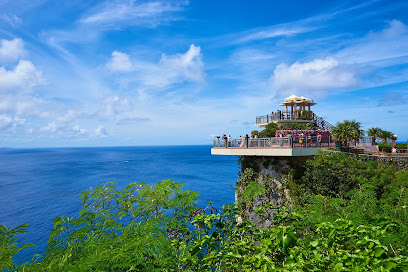
Plaza de España
Discover the rich history and stunning architecture of Plaza de España, Guam's iconic historical landmark and cultural hub.

Fort Nuestra Señora de la Soledad
Explore the historical significance and breathtaking views at Fort Nuestra Señora de la Soledad in Humåtak, Guam.

Cetti Bay Overlook
Discover the breathtaking views and lush landscapes of Cetti Bay Overlook, a prime hiking destination in Guam perfect for nature lovers and adventure seekers.

Ritidian Point
Explore the breathtaking wildlife refuge of Ritidian Point in Guam, where stunning landscapes and diverse wildlife await your discovery.

Fort Santa Agueda
Explore the historic Fort Santa Agueda in Hagåtña, Guam, where culture meets breathtaking views in a unique historical setting.

Fish Eye Underwater Observatory
Explore Guam's vibrant marine life at Fish Eye Underwater Observatory, a unique underwater experience for all ages.
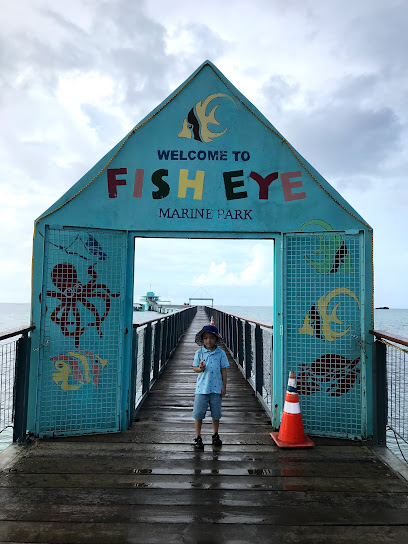
Onward Mangilao Golf Club
Discover the breathtaking views and challenging holes at Onward Mangilao Golf Club, a premier golfing destination in Guam.

Asan Bay Overlook
Explore Asan Bay Overlook, a serene memorial park in Guam, where stunning views meet rich history and natural beauty.

Michelle's Coffee Shop
Discover the inviting atmosphere and delicious offerings at Michelle's Coffee Shop in Mangilao, the perfect spot for coffee lovers visiting Guam.
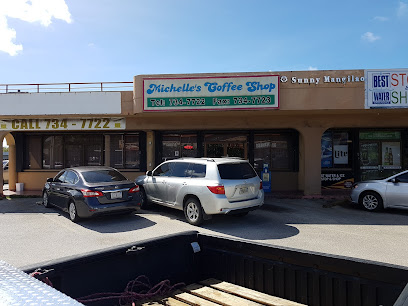
Merizo Pier
Discover the beauty of Guam at Merizo Pier, where stunning ocean views meet vibrant local culture and thrilling water adventures await.

Magellan Monument
Explore the Magellan Monument in Guam, a historical landmark celebrating the arrival of Ferdinand Magellan and offering breathtaking coastal views.

Pacific War Museum
Dive into the past at the Pacific War Museum, an essential stop for history enthusiasts exploring Guam's role in World War II.

Merizo Bell Tower
Explore the historic Merizo Bell Tower in Guam, a charming landmark steeped in cultural heritage and surrounded by stunning island beauty.

Piti Guns
Explore the historic Piti Guns in Guam, a captivating tourist attraction blending military history with stunning coastal views.

Unmissable attractions to see
Fort Nuestra Señora de la Soledad
Explore the historical significance and natural beauty of Fort Nuestra Señora de la Soledad, a must-visit attraction in Guam.

Karera at SandCastle
Discover the vibrant theater productions at Karera in SandCastle, Tumon, Guam, and immerse yourself in the rich cultural heritage of the Pacific Islands.

Taotao Tasi Guam
Discover Guam's cultural heritage and savor delicious BBQ at Taotao Tasi Guam, a unique dinner theater experience on Gun Beach.

Talo'fo'fo' Falls
Experience the natural wonder of Talo'fo'fo' Falls in Guam, a serene escape into lush landscapes and breathtaking waterfalls.

Chamorro Night Market
Dive into the flavors and culture of Guam at the Chamorro Night Market – a vibrant celebration of food, crafts, and entertainment every Wednesday evening.

Onward Mangilao Golf Club
Discover Onward Mangilao Golf Club in Guam, where stunning landscapes meet exceptional golf for an unforgettable experience.

Country Club of the Pacific
Experience world-class golfing amid breathtaking landscapes at the Country Club of the Pacific in Yona, Guam - a golfer's paradise.
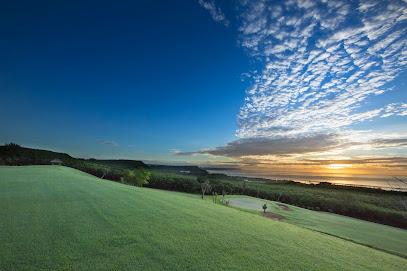
Senator Angel Leon Guerrero Santos Latte Stone Memorial Park
Explore the cultural richness of Guam at Senator Angel Leon Guerrero Santos Latte Stone Memorial Park, an essential historical site adorned with ancient latte stones.

Guam International Raceway
Discover the adrenaline rush at Guam International Raceway, a premier destination for motorsport enthusiasts and racing fans in Yigo, Guam.

Latte of Freedom
Discover the deep-rooted heritage of Guam at the Latte of Freedom Museum, featuring captivating exhibits on Chamorro culture and history.

Guam Ocean Adventures
Explore Guam's underwater paradise with Guam Ocean Adventures, where every dive reveals a world of vibrant marine life and stunning coral reefs.

Our Lady of Purification Catholic Church
Discover the spiritual and cultural heart of Guam at Our Lady of Purification Catholic Church, a stunning architectural gem in Maina.

Guam Sunset Cruise Dinner & Dolphin Watching
Discover the stunning beauty of Guam with an unforgettable sunset cruise that combines dolphin watching and a delightful dinner experience.

Essential places to dine
Lone Star Steakhouse
Experience the best of American dining at Lone Star Steakhouse in Apotgan, Guam—where every steak is grilled to perfection.

King's Restaurant
Discover the delightful flavors of American cuisine at King's Restaurant - a perfect blend of comfort food and local charm in Guam.

Pika's Cafe
Experience the best of Guam’s culinary scene at Pika's Cafe, where delicious breakfasts and lunches await in an inviting atmosphere.

Ruby Tuesday Restaurant
Experience the flavors of America at Ruby Tuesday Restaurant in Apotgan, Guam - where every meal feels like home.

LongHorn Steakhouse
Discover mouthwatering steaks and traditional American fare at LongHorn Steakhouse in Guam – where every meal is a celebration of flavor.

Crust Pizzeria Napoletana
Experience authentic Italian flavors at Crust Pizzeria Napoletana in Hagåtña, where every slice tells a story.

Wendy's Tamuning
Experience delicious fast food at Wendy's Tamuning in Guam—where classic flavors meet local tastes in a friendly atmosphere.

TuRe’ Café
Discover authentic Chamorro cuisine at TuRe' Café in Hagåtña – a must-visit dining spot in Guam offering delicious flavors in a welcoming atmosphere.

Ajisen Ramen
Experience authentic Japanese flavors at Ajisen Ramen in Apotgan, Guam – where every bowl tells a delicious story.
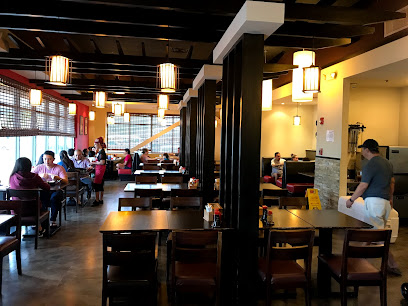
Meskla Chamoru Fusion Bistro - Hagatna
Experience the best of Chamorro cuisine at Meskla Chamoru Fusion Bistro - where tradition meets innovation in Hagatna, Guam.

Olive Garden Italian Restaurant
Experience authentic Italian cuisine at Olive Garden in Tamuning, Guam - perfect for families and food lovers alike!

Jamaican Grill
Discover authentic Jamaican flavors at Jamaican Grill in Hagåtña - a culinary journey filled with spice and warmth.

Crab Daddy Guam
Experience authentic seafood delights at Crab Daddy Guam – where every dish tells a story of island culture and fresh flavors.

Michelle's Coffee Shop
Discover delicious brews and light bites at Michelle's Coffee Shop in Mangilao - your cozy retreat in Guam.

Pho Basi
Experience authentic Vietnamese cuisine at Pho Basi in Guam, where delicious flavors meet warm hospitality in every bowl.

Markets, malls and hidden boutiques
Pay-Less Supermarkets
Discover the best of Guam's flavors at Pay-Less Supermarkets, where local and international products meet affordability and convenience.

Shop 4 Less
Discover a treasure trove of crafts, office supplies, and party essentials at Shop 4 Less in Guam, perfect for tourists and locals alike.

Dial Rent to Own Mangilao
Discover Dial Rent to Own in Mangilao – your one-stop shop for furniture, appliances, and electronics on Guam, perfect for tourists seeking quality and value.

Champion Sporting Goods
Explore Champion Sporting Goods in Mangilao, Guam, your ultimate destination for top-quality sports equipment and apparel, perfect for all athletes.

eagles market
Discover the vibrant flavors of Guam at Eagles Market, your go-to destination for local snacks and fresh produce in Mangilao.

Ching Brothers Enterprises
Explore Ching Brothers Enterprises in Guam for unique home goods and local treasures, perfect for souvenirs and enhancing your living space.

Hidden-Treasures-Thrift-Store-and-Boutique
Explore the charm of Hidden Treasures Thrift Store and Boutique in Guam, where unique fashion finds and sustainable shopping await.

Vape Escape E-juice Supply Co. Mangilao
Explore the vibrant selection of e-juices and accessories at Vape Escape E-juice Supply Co. in Mangilao, Guam – a haven for vaping enthusiasts.

OS 7 Store
Explore the OS 7 Store in Mangilao for fresh local produce and authentic island flavors during your Guam travels.

AH'S MART
Explore AH'S MART in Mangilao, Guam, for a rich selection of local and international beers in a cozy, welcoming atmosphere.

U2 fashion Home Mart
Explore U2 Fashion Home Mart: A charming home goods store in Guam offering unique crafts and decor that reflect local culture.

Dairy Mart
Explore the essence of Guam at Dairy Mart, your go-to grocery store in Mangilao offering fresh produce and local delicacies.

AE Thrift
Discover unique treasures at AE Thrift in Guam, where sustainable shopping meets unbeatable prices for every treasure hunter.

Guam Bikini Shop
Discover stylish swimwear and beach fashion at the Guam Bikini Shop, a must-visit destination for every tourist in Guam.

One Store
Discover a local gem at One Store in Barrigada, Guam, where you'll find everything from essentials to unique local treats.

Essential bars & hidden hideouts
LongHorn Steakhouse
Discover the rich flavors of America at LongHorn Steakhouse in Guam, featuring premium steaks and a family-friendly atmosphere.

Jimmy Dee's Paradise Beach Resort & Bar
Discover the vibrant spirit of Guam at Jimmy Dee's Paradise Beach Resort & Bar, where stunning views and tropical drinks await.

Green Lizzard Tiki Bar
Experience the vibrant atmosphere and tropical flavors at Green Lizzard Tiki Bar in Tumon, Guam. Ideal for nightlife and relaxation.

Michelle's Coffee Shop
Experience the warmth and hospitality of Michelle's Coffee Shop in Mangilao, Guam, where every cup of coffee tells a story.

Pho Cafe
Discover the authentic flavors of Vietnam at Pho Cafe in Mangilao, Guam, where delicious pho and friendly service await.

Pochon Chicken
Discover the taste of Guam at Pochon Chicken, where succulent chicken dishes meet a warm and inviting atmosphere.

Bernie's Bar
Experience the vibrant nightlife of Guam at Bernie's Bar, where friendly faces and refreshing cocktails await you.

The Venue
Experience the vibrant nightlife at The Venue in Hagåtña, Guam, offering crafted cocktails and a lively atmosphere perfect for unwinding.

Old Traditions
Discover Old Traditions, Tumon's lively bar where local flavors meet vibrant nightlife, perfect for an unforgettable evening in Guam.

Wild Bills
Experience the vibrant nightlife at Wild Bills in Apotgan, Guam, with local drinks, live music, and a friendly atmosphere.

Skyline Resto-Pub
Experience the vibrant nightlife and stunning views at Skyline Resto-Pub in Apotgan, a must-visit destination for every traveler.

Gudtaym Lounge
Discover the vibrant nightlife at Gudtaym Lounge in Harmon Industrial Park, where live music and karaoke create unforgettable moments.

Melting Point, Guam
Melting Point: Your ultimate destination for a vibrant nightlife experience in Tumon, Guam, featuring innovative cocktails and a lively atmosphere.

Belle's Bar
Discover the charm of Belle's Bar in Guam, where local culture meets vibrant nightlife in a cozy atmosphere.

Player's Bar
Discover the lively nightlife of Guam at Player's Bar, where good drinks and great company await you in Hagåtña.

Local Phrases
-
- HelloHåfa Adai
[hah-fah ah-dye] - GoodbyeHåfa Adai
[hah-fah ah-dye] - YesHa'anen
[hah-ahn-en] - NoTi
[tee] - Please/You're welcomePor-favor
[por-fah-vor] - Thank youSi Yu'os Ma'åse
[see yoo-ohs mah-ah-say] - Excuse me/SorryDispensa
[dees-pen-sa] - How are you?Cómo estás?
[koh-mo ehs-tahs] - Fine. And you?Maolek. Yan iyo?
[ma-oh-lek yahn ee-yoh] - Do you speak English?Kao hao magof hao i Inglés?
[kow how mah-gohf how ee een-glays] - I don't understandTi hu tungo'
[tee hoo toong-oh]
- HelloHåfa Adai
-
- I'd like to see the menu, pleaseLao'hu i gof menu, por favor
[lou-oh-hoo ee gohf meh-noo por fah-vor] - I don't eat meatTi hu chumo' karne
[tee hoo choo-moh kahr-ney] - Cheers!Biba!
[bee-bah] - I would like to pay, pleaseLao'hu i finak, por favor
[lou-oh-hoo ee fee-nahk por fah-vor]
- I'd like to see the menu, pleaseLao'hu i gof menu, por favor
-
- Help!Ayudame!
[ah-yoo-dah-meh] - Go away!Låo!
[lah-oh] - Call the Police!Llamame i polisia!
[yah-mah-meh ee poh-lee-see-ah] - Call a doctor!Llamame i doktor!
[yah-mah-meh ee dohk-tohr] - I'm lostTi hu dispatsa
[tee hoo dees-paht-sah] - I'm illTi hu malade
[tee hoo mah-lah-deh]
- Help!Ayudame!
-
- I'd like to buy...Lao'hu i gof...
[lou-oh-hoo ee gohf] - I'm just lookingTi hu sa' mo'na
[tee hoo sah moh-nah] - How much is it?Fino' i precio?
[fee-noh ee preh-syoh] - That's too expensiveMismo karu
[mees-moh kah-roo] - Can you lower the price?Fihu i precio?
[fee-who ee preh-syoh]
- I'd like to buy...Lao'hu i gof...
-
- What time is it?Bente i tiempo?
[behn-teh ee tee-ehm-poh] - It's one o'clockUno na ora
[oo-noh nah oh-rah] - Half past (10)Meyor na dies
[mey-ohr nah dees] - MorningAgana
[ah-gah-nah] - AfternoonAgana
[ah-gah-nah] - EveningAgana
[ah-gah-nah] - YesterdayKåtsa
[kah-cha] - TodayHåyi
[hah-yee] - TomorrowMånnge'
[mah-ng-gey] - 1Mågas
[mah-gahs] - 2Lågu
[lah-goo] - 3Tulu
[too-loo] - 4Fatfat
[faht-faht] - 5Lima
[lee-mah] - 6Gunum
[goo-noom] - 7Fitu
[fee-too] - 8Guåsu
[gwah-soo] - 9Sigua
[see-gwah] - 10Månu
[mah-noo]
- What time is it?Bente i tiempo?
-
- Where's a/the...?I naån-ni...
[ee nah-ahn-nee] - What's the address?Kuanto i direksion?
[kwan-toh ee dee-rek-syohn] - Can you show me (on the map)?Manmatto i ma'gof (ni i mapå)?
[mahn-mah-toh ee mah-gohf nee ee mah-pah] - When's the next (bus)?Kuando i siguiente (bis)?
[kwan-doh ee see-gwee-ehn-teh beess] - A ticket (to ....)Un bilite (para ....)
[oon bee-lee-teh pah-rah]
- Where's a/the...?I naån-ni...
History of Mangilao
-
Long before European explorers arrived, Mangilao was home to the indigenous Chamorro people. The Chamorro culture is deeply rooted in the village, characterized by their unique matrilineal society, traditional fishing methods, and the construction of latte stones—pillars used to elevate houses. Archeological sites in Mangilao, such as the Pagat Cave, offer glimpses into the early lives of the Chamorro, showcasing ancient cave paintings, pottery, and other artifacts.
-
In 1521, Ferdinand Magellan's expedition made contact with Guam, leading to Spanish colonization in 1668. Mangilao, like the rest of Guam, was heavily influenced by Spanish culture, religion, and governance. The introduction of Catholicism played a significant role in shaping the village's social and cultural landscape. The construction of churches and the integration of Spanish customs and traditions became evident during this period.
-
The Treaty of Paris in 1898 marked the end of the Spanish-American War, resulting in Guam's cession to the United States. Mangilao, along with other villages, experienced significant changes under American rule. The establishment of the U.S. Naval Station and other military installations brought infrastructure development, including the construction of roads, schools, and hospitals. The presence of the military also introduced new cultural exchanges and economic opportunities.
-
During World War II, Guam was occupied by Japanese forces from 1941 to 1944. Mangilao, like other parts of the island, endured harsh conditions and significant upheaval. The local Chamorro population faced forced labor, food shortages, and violence. The liberation of Guam on July 21, 1944, by American forces is a pivotal moment in Mangilao's history, celebrated annually as Liberation Day. The war left lasting impacts on the village’s landscape and its people's resilience.
-
Following World War II, Mangilao underwent a period of reconstruction and modernization. The establishment of educational institutions such as the University of Guam in 1952 and Guam Community College in 1977 played crucial roles in the village’s development. These institutions not only provided educational opportunities but also became cultural hubs promoting Chamorro heritage and history. The post-war era also saw the growth of residential areas, commercial establishments, and improved public services.
-
In recent decades, there has been a concerted effort to revitalize and preserve Chamorro culture in Mangilao. Events like the annual Mangilao Donne' Festival celebrate local traditions, cuisine, and arts. The village is also known for its agricultural contributions, particularly in growing the hot peppers known as 'donne'. Modern Mangilao is a blend of historical influences, from its indigenous roots to Spanish and American legacies, creating a unique cultural tapestry that continues to evolve.
Mangilao Essentials
-
Mangilao is located in the central part of Guam. The nearest airport is Antonio B. Won Pat International Airport (GUM) in Tamuning, which is approximately a 20-minute drive from Mangilao. From the airport, you can rent a car, hire a taxi, or use hotel shuttle services to reach Mangilao. Some public buses also connect the airport to various parts of the island, including Mangilao.
-
Mangilao is relatively small, and many attractions are within walking distance. For longer distances, taxis are readily available and operate on a meter system. Public buses serve the area and connect Mangilao to other parts of Guam. Renting a car is a convenient option for exploring the island at your own pace, and several car rental agencies operate at the airport and around Mangilao.
-
The official currency in Guam is the US Dollar (USD). Credit and debit cards are widely accepted in hotels, restaurants, and shops. ATMs are available throughout Mangilao, and many establishments accept mobile payments. However, it is advisable to carry some cash for smaller vendors and local markets where card payments might not be accepted.
-
Mangilao is generally a safe destination for tourists. However, it is wise to take standard precautions. Avoid walking alone at night in unfamiliar areas and be cautious with your belongings in crowded places. While Mangilao does not have specific high-crime areas targeting tourists, it is always best to stay vigilant and aware of your surroundings.
-
In case of emergency, dial 911 for immediate assistance. Mangilao has local police and medical facilities to handle emergencies. It is recommended to have travel insurance that covers medical emergencies. For minor health issues, there are several pharmacies in the area where you can purchase over-the-counter medications.
-
Fashion: Do dress modestly, especially when visiting religious sites. Avoid wearing overly revealing clothing. Religion: Do respect local customs and traditions. Always cover your head when entering religious buildings. Public Transport: Do be respectful and give up your seat to elderly passengers. Don’t eat or drink on public transport. Greetings: Do greet people with a smile or a handshake. Chamorro people often appreciate a friendly gesture. Eating & Drinking: Do try local Chamorro delicacies and accept food offerings graciously. Don’t refuse hospitality, as it may be considered impolite.
-
To experience Mangilao like a local, visit the local markets where you can buy fresh produce and traditional Chamorro goods. Engage with locals; they are often friendly and willing to share stories about Mangilao's history and culture. Don’t miss visiting the University of Guam campus, which offers beautiful landscapes and cultural exhibitions. Additionally, explore the scenic trails and natural beauty of the Pago Bay area for a unique and authentic experience.
Trending Landmark in Mangilao
Nearby Cities to Mangilao
-
Things To Do in Dededo
-
Things To Do in Tamuning
-
Things To Do in Tumon
-
Things To Do in Sinajana
-
Things To Do in Hagåtña
-
Things To Do in Agana Heights
-
Things To Do in Yigo
-
Things To Do in Santa Rita
-
Things To Do in Agat
-
Things To Do in Koblerville
-
Things To Do in Saipan
-
Things To Do in Kagman
-
Things To Do in Garapan
-
Things To Do in Capital Hill
-
Things To Do in San Roque








